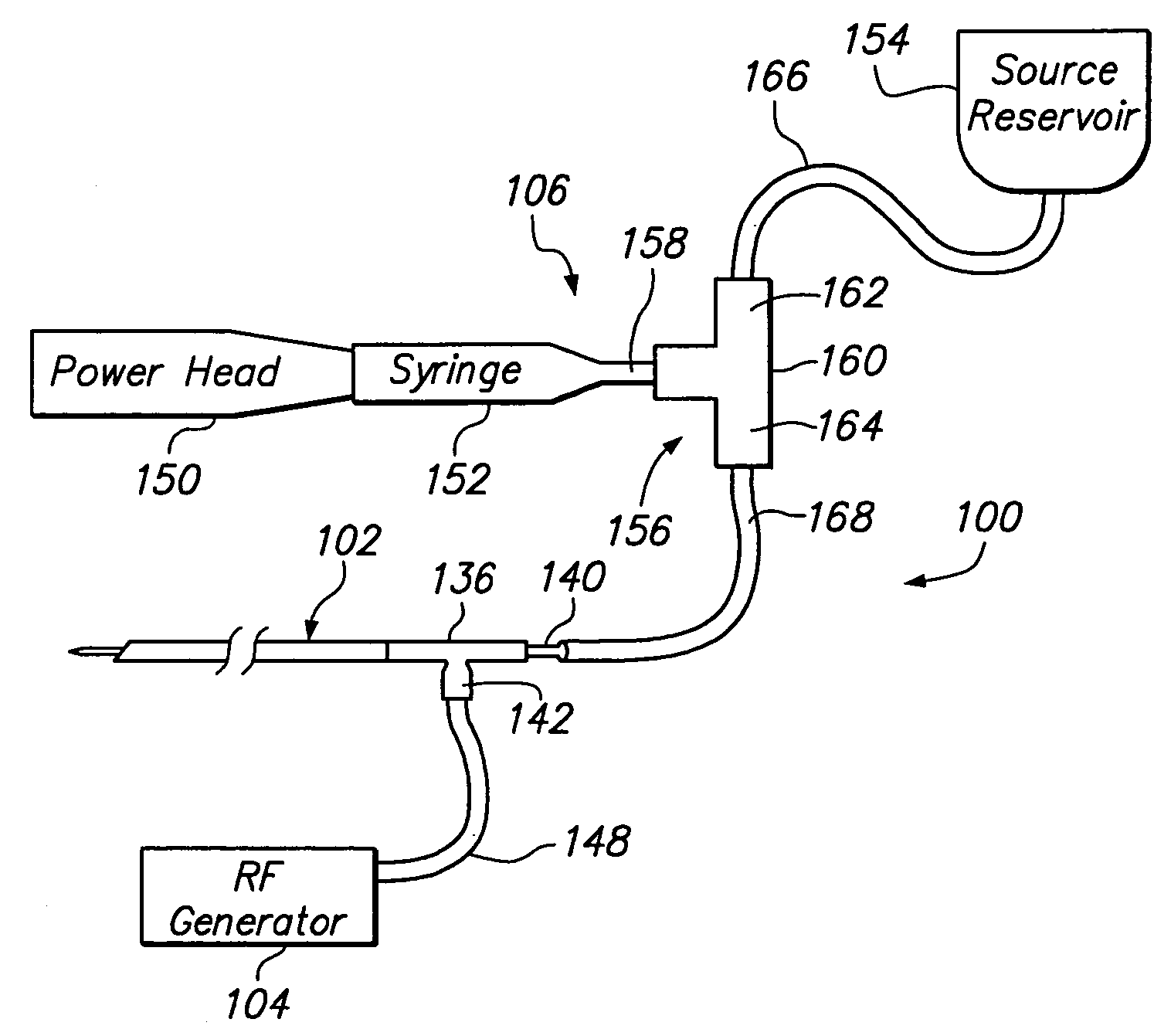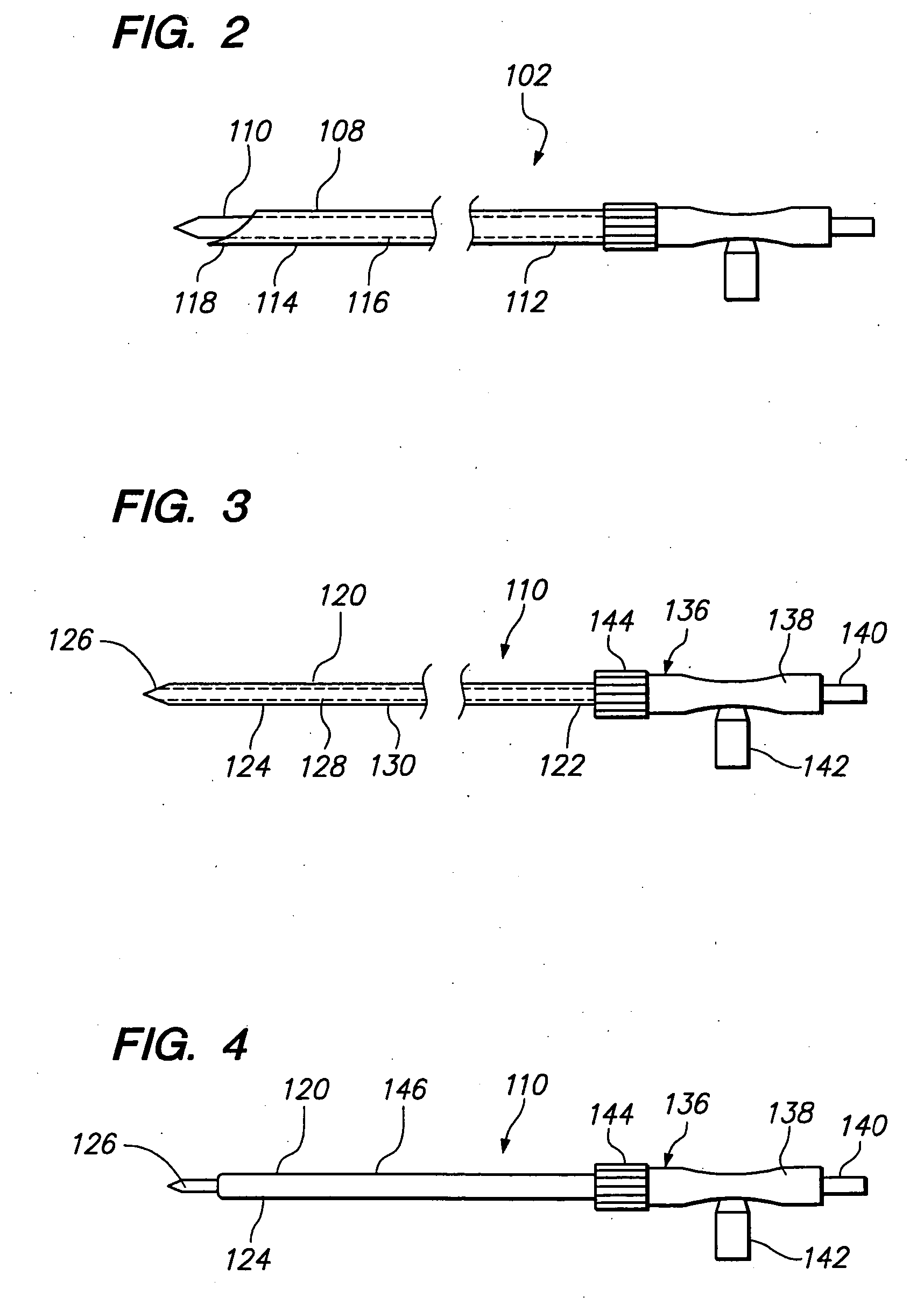Ablation probe for delivering fluid through porous structure
a technology of porous structure and electrosurgical probe, which is applied in the direction of contraceptives, ceramicware, cell components, etc., can solve the problems of clogging of pores, and achieve the effect of increasing the number of pores
- Summary
- Abstract
- Description
- Claims
- Application Information
AI Technical Summary
Benefits of technology
Problems solved by technology
Method used
Image
Examples
Embodiment Construction
[0024]FIG. 1 illustrates a tissue ablation system 100 constructed in accordance with a preferred embodiment of the present inventions. The tissue ablation system 100 generally comprises a probe assembly 102 configured for introduction into the body of a patient for ablative treatment of target tissue; a radio frequency (RF) generator 104 configured for supplying RF energy to the probe assembly 102 in a controlled manner; and a pump assembly 106 configured for perfusing fluid, such as saline, out through the probe assembly 102, so that a more efficient and effective ablation treatment is effected.
[0025] Referring specifically now to FIG. 2, the probe assembly 102 generally comprises an ablation probe 110 and a cannula 108 through which the ablation probe 110 can be introduced. As will be described in further detail below, the cannula 108 serves to deliver the active portion of the ablation probe 110 to the target tissue. The cannula 108 has a proximal end 112, a distal end 114, and ...
PUM
| Property | Measurement | Unit |
|---|---|---|
| Diameter | aaaaa | aaaaa |
| Porosity | aaaaa | aaaaa |
| Porosity | aaaaa | aaaaa |
Abstract
Description
Claims
Application Information
 Login to View More
Login to View More - R&D
- Intellectual Property
- Life Sciences
- Materials
- Tech Scout
- Unparalleled Data Quality
- Higher Quality Content
- 60% Fewer Hallucinations
Browse by: Latest US Patents, China's latest patents, Technical Efficacy Thesaurus, Application Domain, Technology Topic, Popular Technical Reports.
© 2025 PatSnap. All rights reserved.Legal|Privacy policy|Modern Slavery Act Transparency Statement|Sitemap|About US| Contact US: help@patsnap.com



